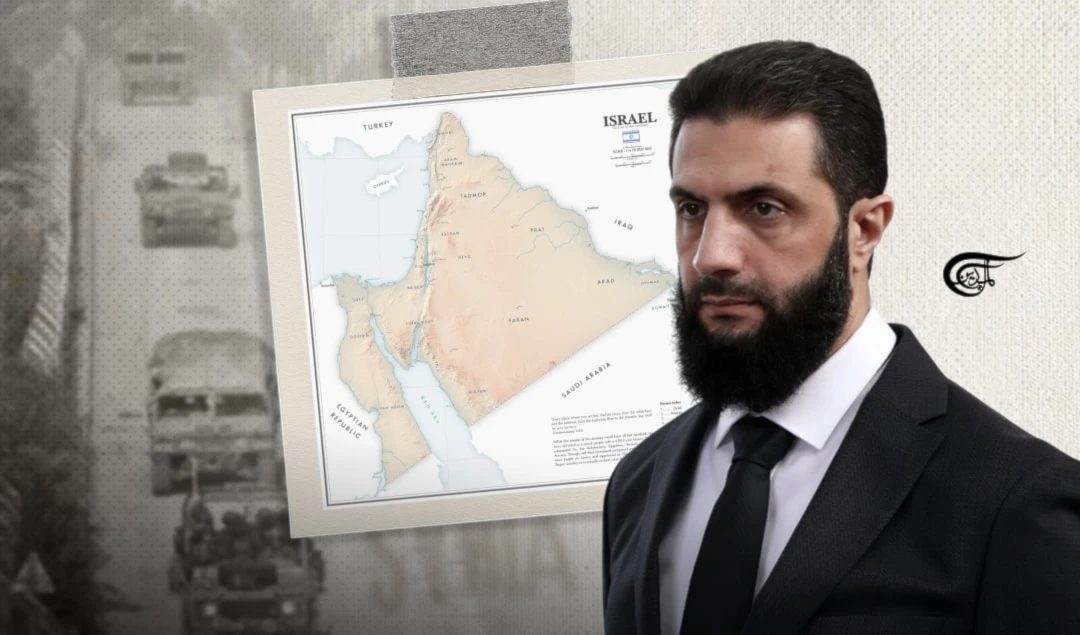Sino-Arab Relations: Velvet Hopes and Tragic Realities
The qualitative shift in Chinese political and economic thought has direct repercussions on Sino-Arab relations, especially with regard to trade exchanges and the protection of economic interests, even if it leads to direct military intervention.
-

As for the Belt and Road Initiative, it will help strengthen Arab-Chinese relations, 18 Arab countries have signed agreements with China to participate in this initiative
In the recent decade, China has become a crucial partner for many nations in West Asia. China-Arab relations have progressed steadily. China prioritizes this region because of its abundant natural resources, enormous commercial market, and strategic location. Since the Belt and Road Initiative was announced, West Asia has taken on new significance as a nexus between China and the world's three ancient continents.
Trade Culture Trends
The volume of trade between the Arab world and China reflects two trends: for 2018, it was at $244.3 billion, up to 28 percent from 2017, compared to $25.4 billion in 2003. According to the Chinese Ministry of Commerce, it will reach $266.4 billion in 2020, an annual rise of $15 billion. In 2019, China imported $146 billion worth of goods from Arab countries, a rise of 4.8 percent.
There was a 14.7% increase in Chinese exports to Arab countries, totaling $120.4 billion. As compared to 2018, Chinese FDI in Arab countries increased by 18.8% to $1.42 billion in 2019. Despite a decrease of 8.7% year-over-year, Chinese enterprises inked $32.5 billion worth of project contracts with Arab countries in 2018, bringing their total commercial value to $30.5 billion.
Electrified Railway
For the period between 2004 and 2018, China made a total investment of $224.3 billion in the Arab region. More than two-thirds of China's aid to Arab countries in 2018 came in the form of loans, with $90.6 million going to the four countries of Syria, Yemen, Jordan, and Lebanon. To build a 68-kilometer electrified railway to the new administrative capital, Egypt received $1.2 billion from the World Bank. Egypt received $3 billion in Chinese investment for the construction of eight buildings in the business district of the administrative capital.
The kingdom of Saudi Arabia aids China; An Oil and Petrochemical Complex in China and Leisure Area near Beijing Daxing International Airport.
In February 2019, Saudi Arabia signed 12 agreements worth $28 billion with China. Because of the company's agreement to build an oil and petrochemical complex in China, Aramco contributed $10 billion of its own money. More than a dozen commercial, oil, and environmental agreements were struck between the United Arab Emirates (UAE) and China. An $11 billion grant was provided to Emirati developer Emaar for the construction of a residential and leisure area near Beijing Daxing International Airport.
One hundred and seventy-seven billion dollars was spent on Arab oil exports to China in 2018, and three Arab countries supplied the bulk of the country with all of the energy it required. Iraq came in at number four with $22.4 billion, followed by Saudi Arabia ($29.7 billion) and Oman ($17.3 billion).
There has been a 16.5 percent annual increase in the number of tourists between China and Arab countries, according to the China-Arab States Cooperation Forum.
Arabs made a total of 338.8 thousand trips to China, while Chinese made a total of 1.456 million trips to the Arab world, an increase of 0.7% and 8.9% from 2017–2018. China and the Arab world each have an average of 28 flights every day.
The Belt and Road Initiative
As for the Belt and Road Initiative, it will help strengthen Arab-Chinese relations. 18 Arab countries have signed agreements with China to participate in this initiative, while the Asian Infrastructure Investment Bank (AIIB) includes 9 Arab members.
The China Atomic Energy Agency and the Arab Atomic Energy Agency signed agreements to create a training centre for the peaceful use of atomic energy in the Arab region with the Global Energy Interconnection Development and Cooperation Organization in China.
Education
The Chinese Society for Arabic Literature Works was established in 1987 and numerous classic Chinese literary studies have been translated into Arabic. There has been an upsurge in the number of students from China and the Arab world in universities.
In 2019, there were 20,149 Arab students studying in Chinese universities, whereas just 1,129 Chinese were doing the same. Twelve Confucius Institutes and four Confucius classrooms have been set up in the Middle East by China.
Military Troops
Arab-Chinese ties are pacifist, as evidenced by the absence of Chinese military bases in the Arab region. In terms of regional arms sales, China does not hold the top spot.
There are 32–35 thousand American military soldiers in the Gulf states, including Syria and Jordan, according to Western sources.
While the United States, France, Italy, Russia, and the United Kingdom each have over a dozen military posts in Arab countries (13 in total), China only has a logistic station in Djibouti.
Chinese marine bases, according to Xinhua News Agency, might be located in Egypt's Port Said or Lebanon's Tripoli provinces. Building more aircraft carriers for international operations is underway.
China has indicated its willingness to engage in the fights against ISIS in Iraq if China's security and interests are under risk, according to Wang Yi's December 2014 statement. China's intervention in Libya to save 36,000 people may be an indication of this trend, especially since China lost $20 billion in Libya, which made it realize that neglecting other locations may generate the same experience, so the basis of non-military activity abroad must be revised.
China's policy of "adaptation" to the security situation in the Middle East is confirmed by the March 2021 strategic agreement between China and Iran, especially since the agreement does not refer to security dimensions or cooperation in the defence industries, while some reports indicate that there are possibilities for military cooperation, especially in countering terrorist movements and intelligence cooperation.
Data shows that the Arab region is one of the most unstable geopolitical areas in the world today. Since the Arab-Chinese commerce, investment, and the BRI in the Arab area could be affected by this climate, Chinese foreign policy is concerned. This means that China may need to rely on "soft" external influence, which can later turn "coercive," in order to exert influence.
Silk Road
ISIS has previously published a map showing the Silk Road passing through Khorasan (which includes parts of China) and Islamic countries in West Asia, including Iran, Syria, and Iraq, before coming to an intersection with elements of the Caliphate state.
This is a threat to the New Silk Road Project, the Land Road, and the Maritime Road. Since its extension, the Suez Canal has become an important link between the Maritime Silk Route and Italy's land road, which is also in direct contact with the caliphate project of the Islamic State of Iraq and al-Sham (ISIS) (in Asia and the Sinai desert).
Thus, the Chinese project is threatened by ISIS or other radical terrorist groups. After the withdrawal of NATO and US forces, Chinese officials fear that Islamic movements will gain strength in Afghanistan and that the Wakhan Corridor between China's and Afghanistan's borders, which was used by the Taliban movement to train fighters, may reopen.
Oil
Oil sources estimate that China gets 20% of its oil from Iraq. It is also possible that a resurgence of Islamic movements in Iraq might pose a threat to China's energy resources and interests. In Muslim regions of West Asia, Chinese energy ambitions are growing (60 percent of its oil comes from the Middle East).
In light of the fact that 60 percent of Syria's oil is controlled by Islamic groups, this will urge China to protect its main sources of oil. Chinese defence and security expenditures have risen each year as a response to these changes and to protect China's interests both domestically and internationally.
Security Expenditure
Both China's defence and internal security expenditure increased significantly between 2010 and 2021, from $84.6 billion to $ 293.35 billion, respectively. Warplanes and battleships, which fall under the ministry of heavy industry, are not included in the Chinese accounting system for defence spending. In addition, tens of thousands of military retirees are not included in defence budget, but rather in social services and other programs.
China's announced defence spending will be higher if China adopts the customary method of calculating it. China's military spending increased linearly from 2010 to 2021, while estimates from other countries suggest that actual spending may be far higher.
In 2022, China is expected to spend $300 billion on defence, which will raise defence spending by 7.1%, faster than last year. In order for China and Russia's "multipolarity" paradigm to operate, the international community, especially its central powers, must contribute to it. In the years following 1978, China's political literature indicates a shift in the country's perspective on international relations and the world order.
Political literature in China before to the 1990s was largely focused on the international system. Questions raised by Chinese scholar QIN in 1978 included whether the international system should be regarded from a perspective of war and struggle or peace and development, as well as whether China achieves its goals by integrating into the international system or competing for power.
According to Zheng Bijian's idea, a multipolar international system should be established and the focus should shift from a country wanting to alter the current system to one seeking to integrate into it and take the lead in globalization. As the country's worldwide prominence grows, it requires a specific role in the international system.
Immediately following Mao Zedong's death, there was a dominant theory in Chinese thinking, “The Bird Cage Doctrine” of Deng Xiaoping, which incorporates socialism and capitalism. Chinese pragmatism is expressed in Lou Jiwei's “cat colour theory”. Cats chase mice, not because they're orange. Economic and political outcomes are more important than "ideological colour" in these times.
Curricula also changed to reflect major signs, such as a shift in the interpretation of building the wall from resisting invaders to fostering national unity and the use of watchtowers to improve communication amongst Chinese tribes.
A return to Westphalian state conceptions in China can be seen in this instance. The qualitative shift in Chinese political and economic thought has direct repercussions on Sino-Arab relations, especially with regard to trade exchanges and the protection of economic interests, even if it leads to direct military intervention.
Keywords: Sino-Arab relations, Geopolitics of West Asia, Chinese Foreign Policy, Belt and Road initiative

 Mohamad Zreik
Mohamad Zreik
 9 Min Read
9 Min Read











